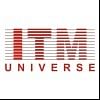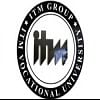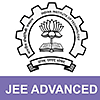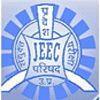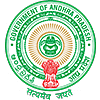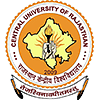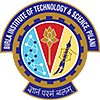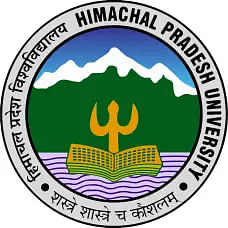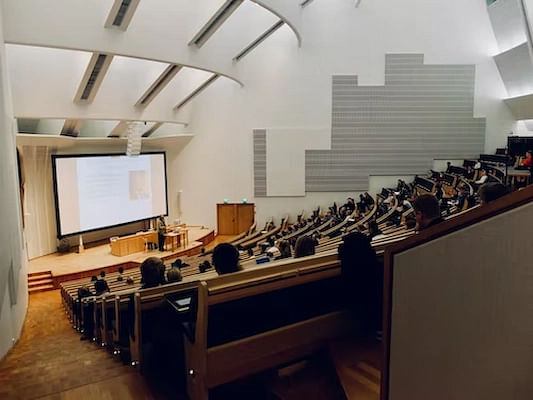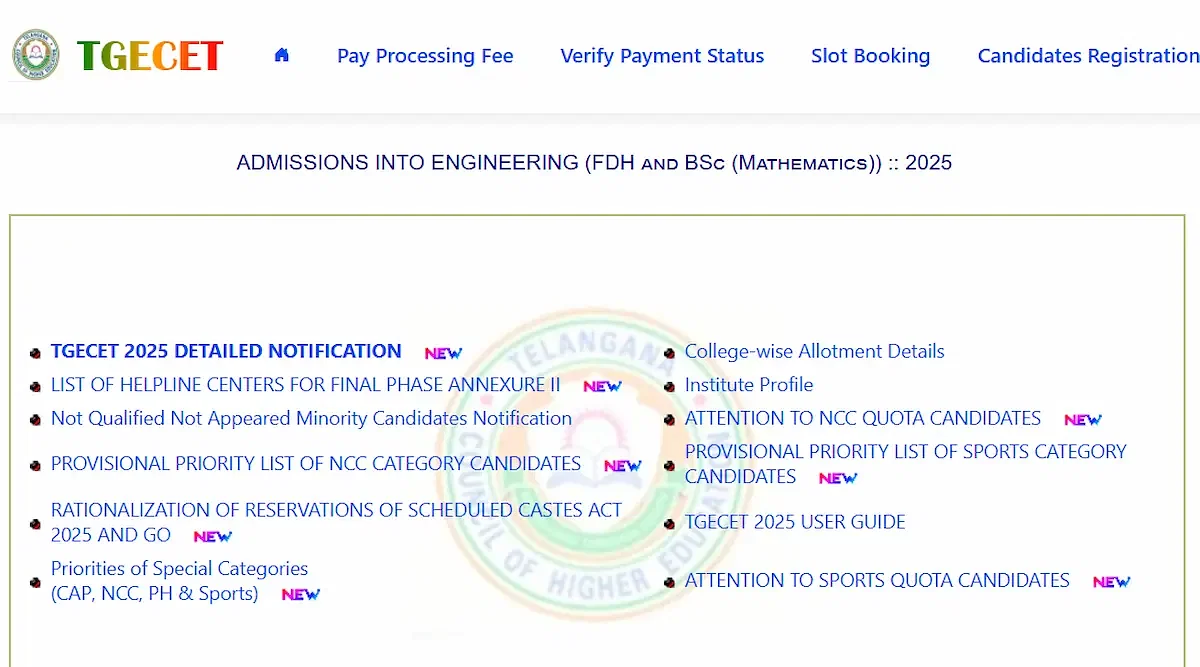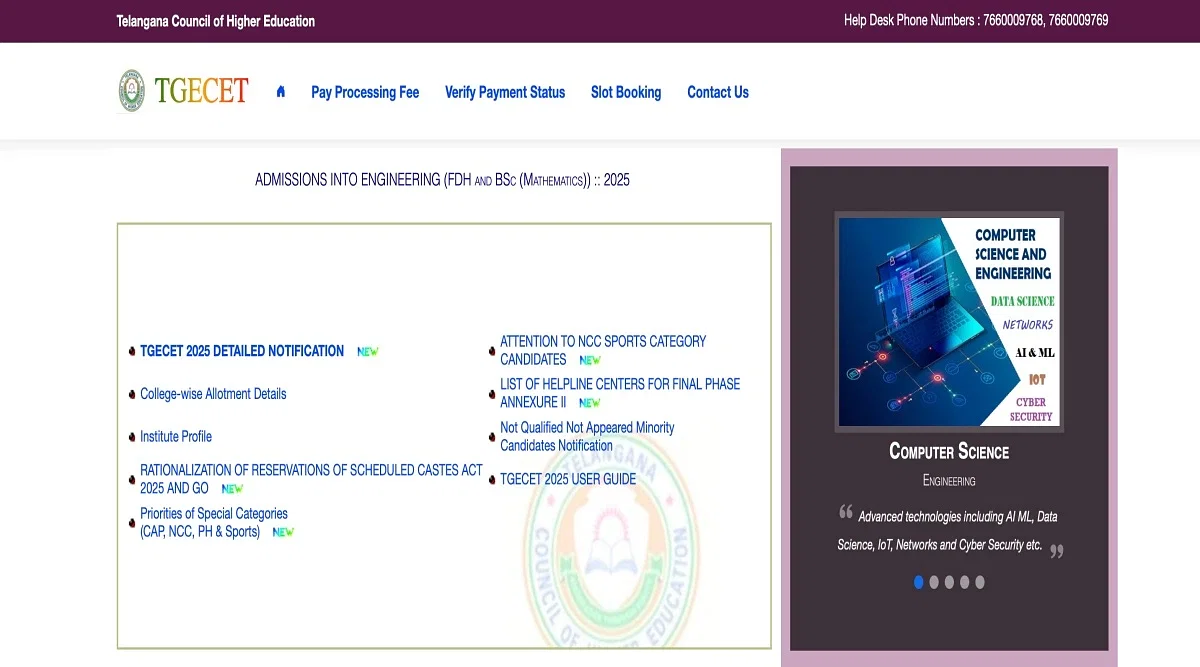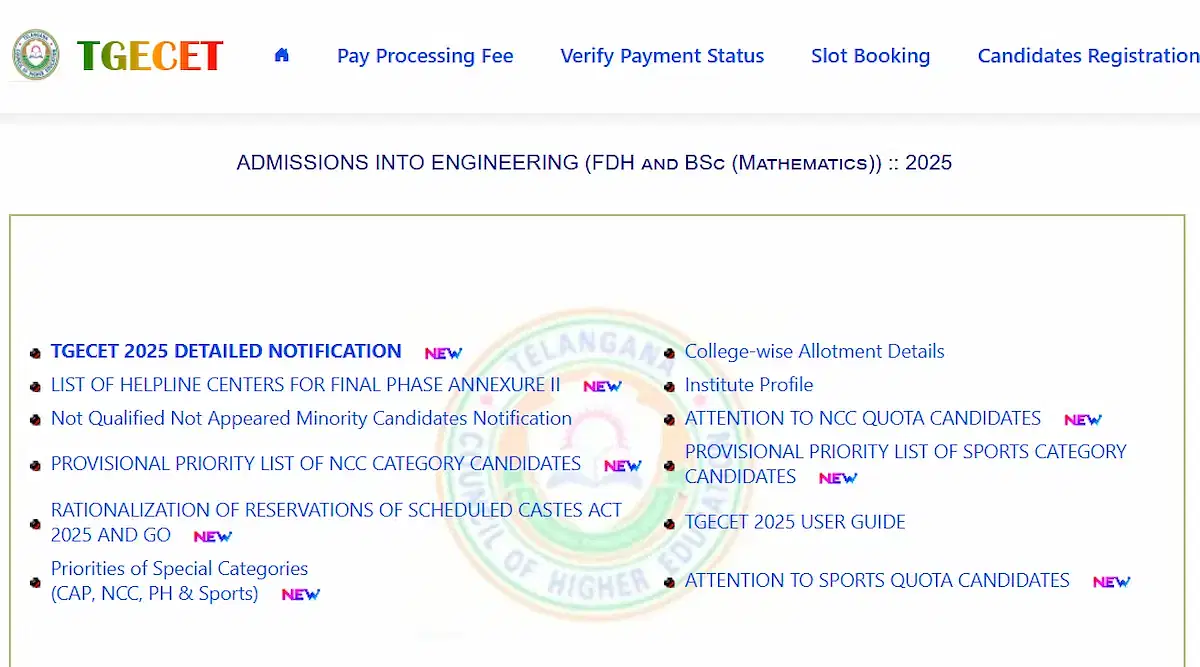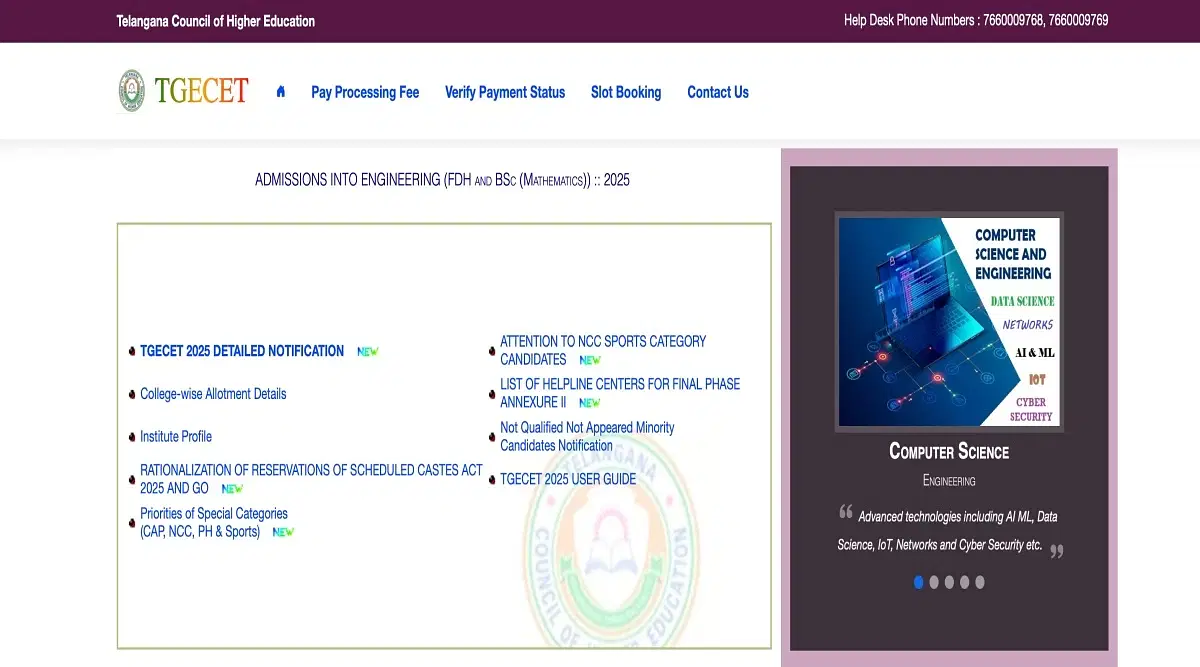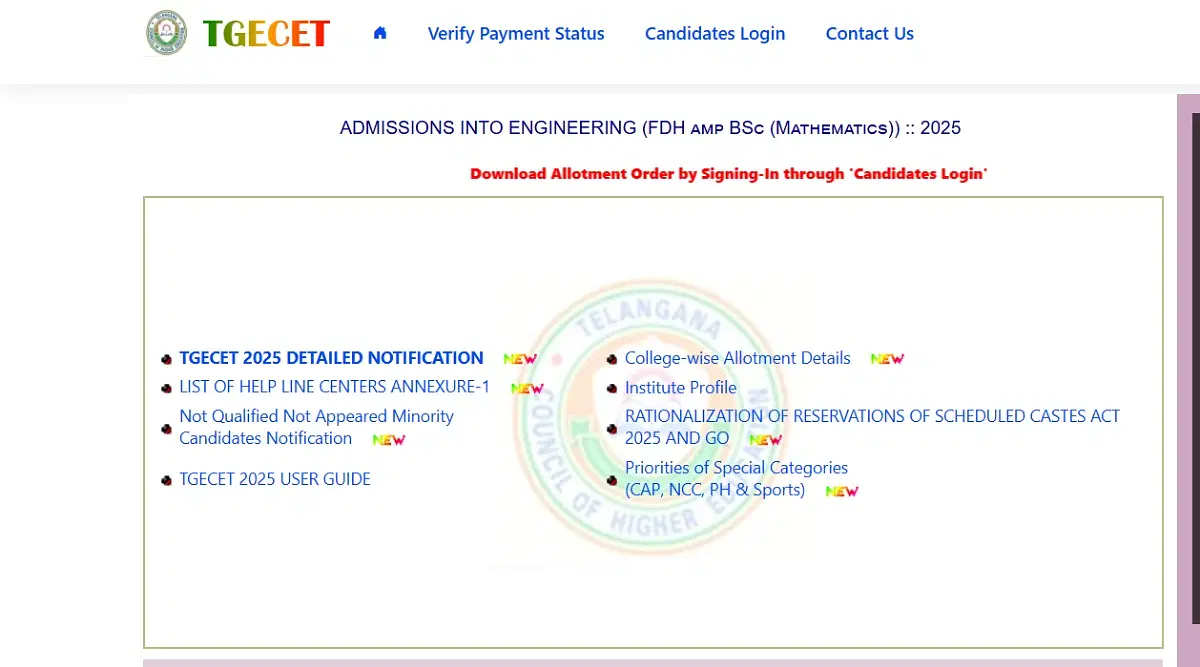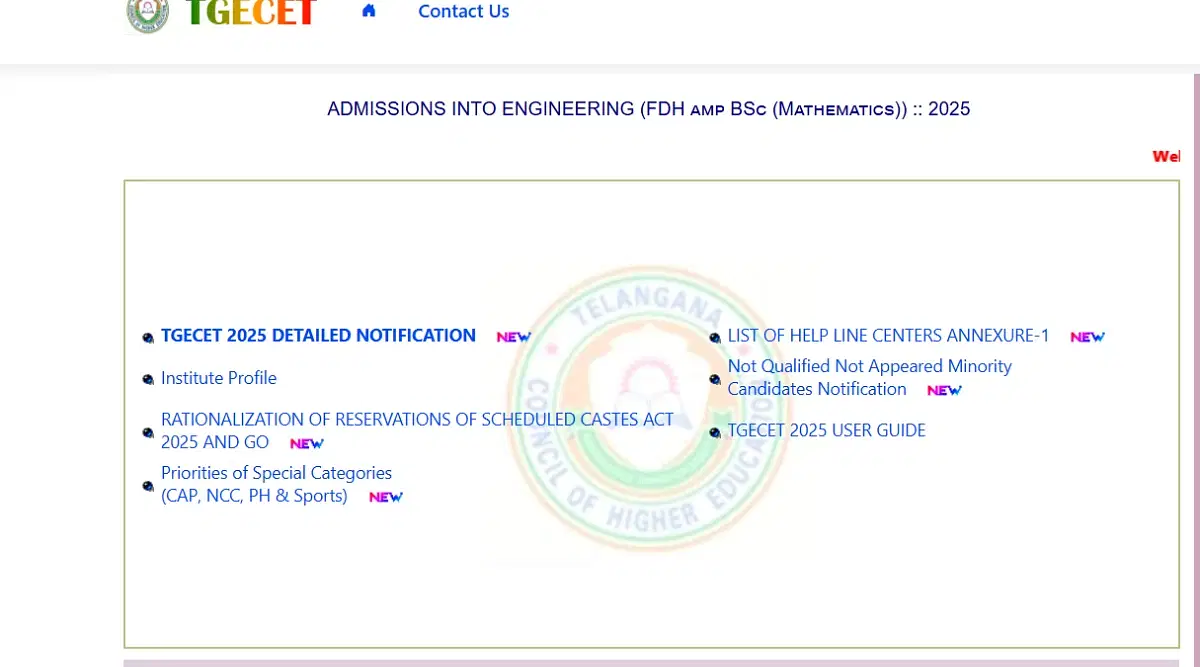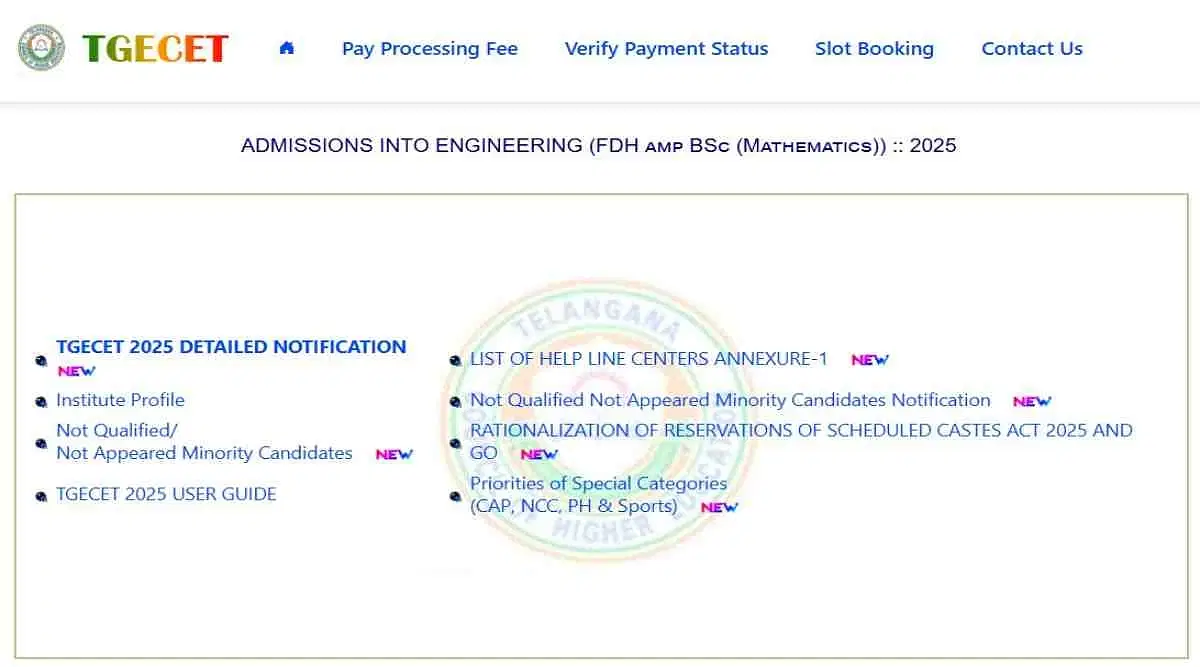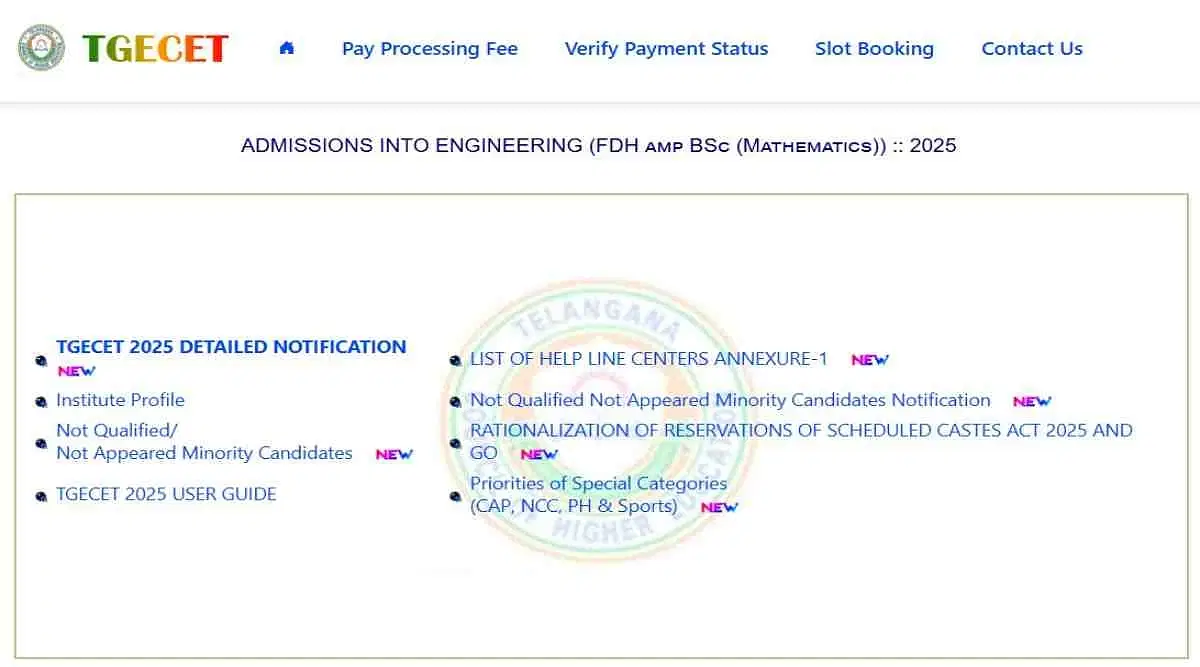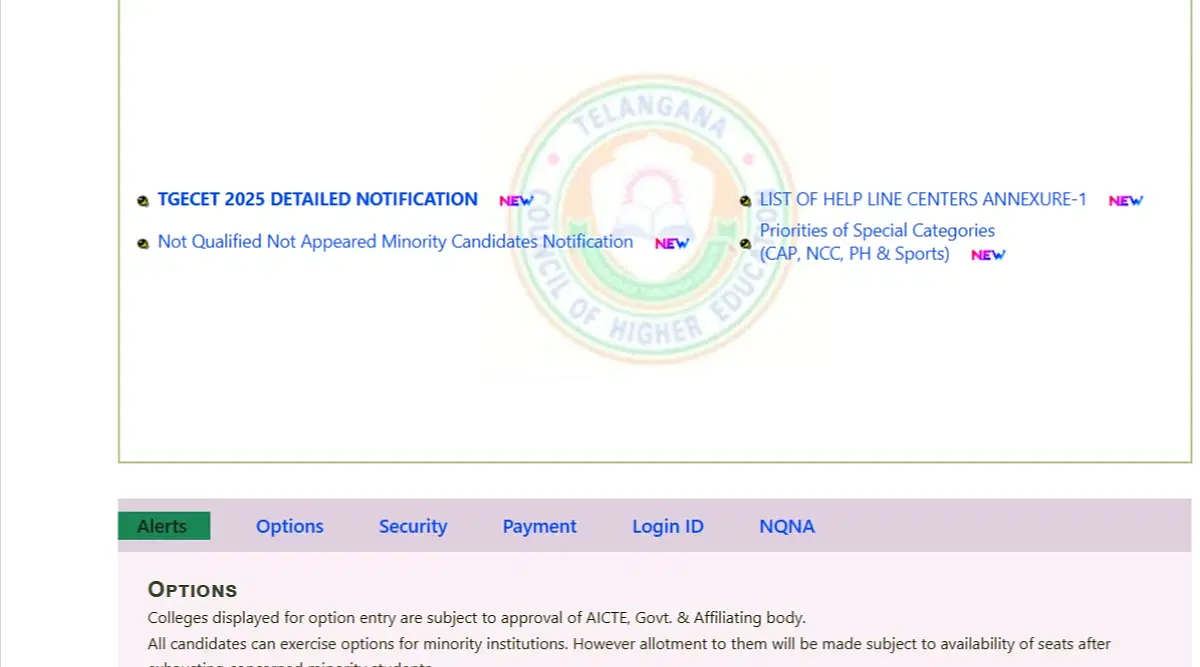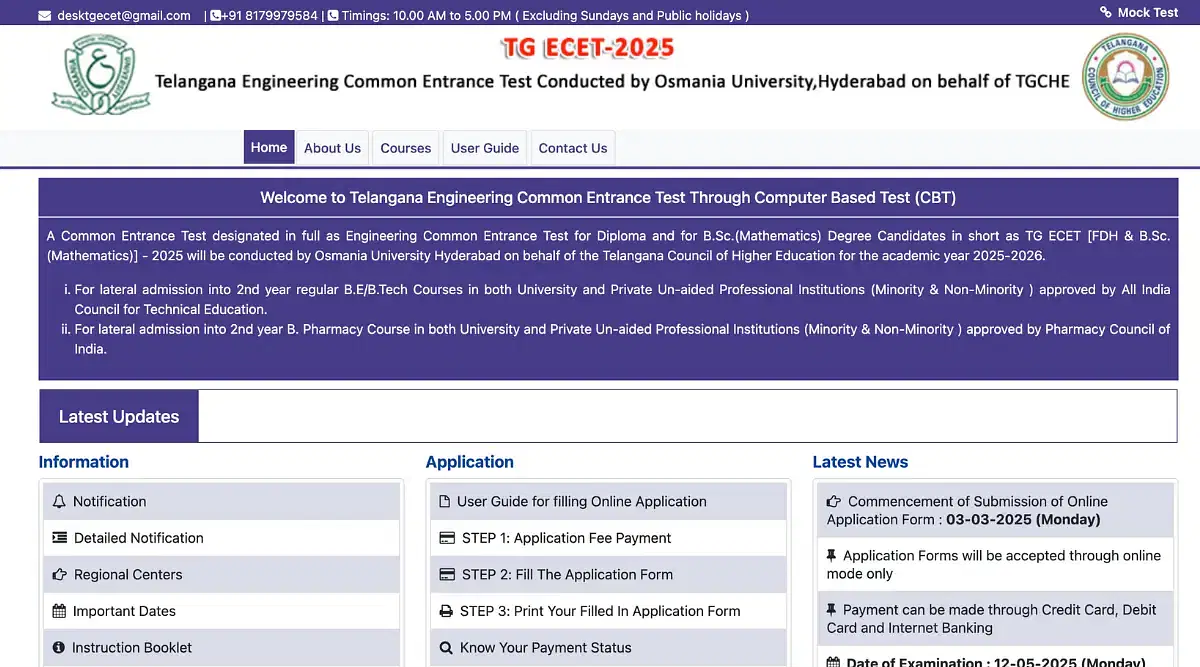
Table of Contents
TS ECET Civil Engineering Syllabus 2024 has been released by the conducting body of TS ECET, Jawaharlal Nehru Technological University. In Mathematics, units such as trigonometry, Integration and its Applications, and Fourier Series are present.
The Physics paper contains topics such as Integration and its Applications, Elements vs. Vectors, and Mechanics. While in the Chemistry paper, there are topics such as Corrosion, Polymers, Fuels, and Environmental studies. Finally, the Section with the maximum weightage is the Civil Engineering section.
TS ECET 2024 Civil Engineering Syllabus PDF
The authority has released the TS ECET Civil Engineering Syllabus 2024 PDF on its official website. Candidates can download the TS ECET Syllabus 2024 and prepare from the same to ace their TS ECET 2024 examination.
| Subject | Syllabus PDF |
| TS ECET 2024 Civil Engineering | Download PDF |
TS ECET Civil Engineering Syllabus 2024
TS ECET exam is a state-level examination for admission into courses such as B.Tech, Artificial Intelligence, Civil Engineering, Electrical and Electronics Engineering, Instrumentation Engineering and Technology, Computer Science and Technology, etc.
TS ECET Civil Engineering Syllabus contains topics such as Engineering Mechanics, Strength of Materials, Reinforced Concrete Structures, Surveying, Hydraulics, Irrigation Engineering, Transportation Engineering, Water Supply and Sanitary Engineering, and Building Materials and Construction Practice.
Unit–I: Engineering Mechanics
- Forces and Moments
- Vectors and Scalars
- Resultant Forces at a Point
- Types of Supports
- Types of Loading
- Centroid – Rectangle
- Triangle
- Parallelogram
- Circle
- Semicircle
- Trapezium
- Location of Centroid of T, L, I, Channel, Z Sections.
- Built-Up Sections
- Moment of Inertia – T, L, I and Built-Up Sections
- Radius of Gyration of Built-Up Sections
- Polar Moment of Inertia of Solid and Hollow Circular Sections Using Perpendicular Axis Theorem Only.
- Simple Stresses and Strains - Ductile Materials
- Mechanical Properties of Materials - Hooke‘s Law
- Lateral Strain
- Poisson‘s Ratio-Elastic
- Constants and The Relation Between Them- Composite Sections.
Unit-II: Strength of Materials
- Shear Force and Bending Moment Diagrams for Cantilever
- Simply Supported and Overhanging Beams Subjected to Point Loads and Udl
- Theory of Simple Bending
- Assumptions-Bending Equation-Bending Stresses
- Section Modulus
- Shear Stress Distribution Across Various Sections Like Rectangular
- Circular and I - Sections-Torsion-Solid and Hollow Circular Shafts Subjected to Pure Torsion
- Shear Stress
- Distribution inShafts
- Power Transmitted By Circular Shafts
- Slope and Deflection of Cantilevers and Simply Supported Beams By Double Integration Method and Deflection of Simply Supported Beams By Macaulay‘s Method – Mohr‘s Theorems for Slopes and Deflections-Moment Area Method-Symmetrical Loading.
- Columns and Struts-Types Slenderness Ratio
- Euler’s and Rankine’s Formulae for Axial Loading.
Unit-III: Reinforced Concrete Structures
- Grades of Concrete
- Characteristic Strength
- Modulus of Elasticity-I.S.456-2000
- Philosophy of Limit State Design
- Limit State of Strength and Serviceability
- Partial Safety Factor
- Design Strength of Materials and Design Loads
- Assumptions.
- Analysis and Limit State Design of Rectangular Beams-Singly
- Doubly Reinforced and T-Beams
- Shear inRcc Beams
- Development Length
- Slabs-Analysis and Limit State Design of One-Way
- Two-Way Slabs as per Is.456-2000
- Torsion Reinforcement
- Design of Continuous Slabs and Beams
- Deflection Check for Slabs and Beams
- Detailing of Reinforcement inSingly Reinforced and Doubly Reinforced Simply Supported Beams of Rectangular Sections and Lintels One Way and Two Way Slabs.
- Columns: Codal Provisions of I.S 456-2000
- Short and Long Columns
- Different Shapes
- Design of Short Columns By Limit State Method
- Long Columns- Concept
- Effective Length for Different End Conditions
- Footings-Isolated Column
- Footings-One Way Shear and Two Way Shear.
- Stairs – Types.
Unit-IV: Surveying
- Chain Surveying
- Purpose and Principle
- Offsets - Errors and Corrections
- Different Operations inChain Surveying
- Obstacles - Methods of Calculation of Area.
- Compass Surveying - Purpose and Principle
- Bearings- Traversing Using Prismatic Compass
- Local Attraction
- Errors Levelling
- Definitions - Component Parts of Dumpy Level
- Methods of Levelling - Contouring
- Characteristics and Methods
- Theodolite - Principles and Component Parts
- Fundamental Lines and Relationships Among Them
- Adjustments of Theodolite - Measurement of Horizontal and Vertical Angles -
- Traverse Computations
- Bowditch and Transit Rule
- Tachometry - Principle
- Stadia Tachometry - Tangential Tachometry
- Principle and Uses of E.D.M, Electronic Theodolite, Total Station, Global Positioning System, Importance
- G.I.S – Use and Applications in civil Engineering
- Curves - Simple Curves
- Elements of Simple Curve
- Setting Out of Simple Curves By Chain & Tape
- Single & Double Theodolite Method.
Unit-V: Hydraulics
- Fluid Properties
- Specific Weight
- Mass Density
- Specific Gravity
- Surface Tension
- Capillarity Viscosity
- Atmospheric Pressure
- Gauge Pressure and Absolute Pressure
- Fluid Pressure On Plane Surfaces
- Centre of Pressure and Total Pressure
- Measurement of Fluid Pressure Using Piezo Meter and Manometers
- Types of Flows-Uniform
- Non-Uniform
- Steady
- Unsteady
- Laminar and Turbulent Flows
- Energies of Liquid inMotion
- Continuity Equation
- Bernoulli‘s Theorem
- Pitot Tube
- Venturi Meter
- Flow Thorough Small and Large Orifices
- Coefficients of Orifices - Cc, Cv and Cd.
- Flow Through Internal
- External
- Convergent and Divergent Mouthpieces
- Types of Notches
- Rectangular and Triangular
- Flow Over Notches
- types of Weirs
- Sharp Crested and Broad Crested Mathematical Formulae for Discharge
- Francis and Bazin’s Empirical Formulae.
- Flow Through Pipes
- Major and Minor Losses
- Chezy‘s and Darcy‘s Formulae for Loss of Head Due to Friction-Hgl & Tel
- Flow Through Open Channels
- Rectangular and Trapezoidal
- Chezy‘s Formula for Discharge
- Kutter's and Manning‘s Equation for Chezy‘s Constant
- Most Economical Sections. Reciprocating and Centrifugal Pumps (Without Problems).
- Classification of Turbines - Kaplan
- Francis and Pelton Wheel (Without Problems)
- Types and Uses of Draft Tubes
- Hydro
- Electric Installations
- Components and Uses.
Unit-VI: Irrigation Engineering
- Necessity of Irrigations
- Perennial and Inundation Irrigation
- Flow and Lift Irrigation
- Principal Seasons
- Kharif and Rabi Crops Duty
- Delta and Base Period
- Methods of Irrigation
- Check Flooding
- Basin Flooding
- Border Strip
- Furrow
- Sprinkler and Drip Irrigations
- Hydrology - Rainfall
- Types of Rain Gauges
- Types of Catchments
- Rainfall and Runoff
- Measurement of Velocity of Flow inStreams
- Classification of Head Works
- Component Parts of Diversion Head Works
- Weirs and Barrages Percolation and Uplift Pressures
- Types of Reservoirs
- Dead Storage and Live Storage
- Storage Head Works
- Different Types of Dams
- Gravity Dams
- Low and High Dams
- Elementary Profile of a Dam
- Failures of Gravity Dams
- Drainage Galleries
- Types of Spillways
- Earth Dams
- Failures and Precautions
- Phreatic Lines and Drainage Arrangements inEarthen Dams
- Distribution Works-Classifications and Alignment of Canals
- Typical Cross Section of a Canal-Berms
- Balanced Depth of Cutting- Canal Lining
- Cross Drainage Works
- Types and Functions
- Soil Erosion
- Types and Causes
- Measures to Control Erosion
Unit-VII: Transportation Engineering
- Importance of Transportation Engineering- I.R.C.
- Classification of Roads as per I.R.C.
- Recommended I.R.C. Values of Camber for Different Roads
- Gradients – Ruling Gradient
- Limiting and Exceptional Gradient Recommended-I.R.C Values of Gradients.
- Traffic Engg.- Traffic Census and Its Importance
- Road Intersections
- Traffic Signs
- Informatory Signs
- Mandatory Signs
- Cautionary Signs
- Highway Construction and Maintenance
- Purpose of Road Drainage
- Surface and Sub-Surface Drainage
- Typical Cross Section of Highway in Cutting and Embankment
- Water Bound Macadam Roads
- Cement Concrete Roads
- Permanent Way of Railways
- Importance of Railways- Gauge
- Types of Gauges
- Structure of Permanent Way – Different Types of Rails
- Requirements of a Good Rail
- Sleepers- Functions
- Types of Sleepers
Unit-VIII: Water Supply and Sanitary Engineering
- Quality of Water
- Need for Protected Water Supply
- Total Quantity of Water for A Town
- Per Capita
- Demand and Factors Affecting Demand
- Forecasting Population By Arithmetical
- Geometrical and Incremental Increase Methods
- Sources and Conveyance of Water: Surface Sources
- Underground Sources
- Types of Intakes
- Quality and Methods of Purification of Water.
- Distribution System: Methods of Supply, Storage
- Distribution Systems
- Types of Layout, Dead End, Grid, Radial and Ring Systems, their Merits and Demerits and their Suitability
- General Layout of Water Supply Arrangements in Buildings.
- System of Sewage Disposal-Types of Sewerage Systems, Different Shapes of Cross-Section for Sewers, Strength of Sewage, Sampling of Sewage, Characteristics of Sewage - Principles of Treatment, Preliminary Treatment, Secondary Treatment. Sewers –Sewer Appurtences-Shapes, Merits and Demerits.
Unit-IX: Building Materials and Construction Practice
- Stones-Classification of Rocks
- Bricks – Manufacturing
- Tests On Bricks
- Tiles- Types of Tiles
- Cement- Classification Manufacturing-Tests
- Mortars – Classification - Proportioning
- Concrete Proportioning – Water-Cement Ratio
- Workability – Admixtures-Curing Methods-R.M.C
- Timber and Surface Protective Materials
- Characteristics - Types and Uses.
- Classification of Buildings, Foundations-N.B.C
- Classification-Bearing Capacity of Soil- Types of Foundations
- Masonry-Bonds inBrick Masonry
- Plastering-Purpose
- Pointing Purpose and Types
TS ECET Civil Engineering Mathematics Syllabus
TS ECET Civil Engineering Mathematics Syllabus contains topics such as Matrices, Trigonometry, Analytical Geometry, Differentiation and its Applications, Integration and its Applications, Differential Equations, Laplace Transforms and Fourier Series.
Unit-I: Matrices
- Matrices: Definition of Matrix
- Types of Matrices-Algebra of Matrices-Transpose
- Matrix Symmetric
- Skew-Symmetric Matrices-Minor
- Cofactor of an Element-Determinant of a Square Matrix-Properties-Laplace‘s Expansion-Singular and Non-Singular Matrices-Adjoint and Multiplicative Inverse of a Square Matrix-System of Linear Equations in 3 Variables-Solutions by Cramer‘s Rule
- Matrix Inversion Method-Gauss-Jordan Method.-Partial Fractions: Resolving a Given Rational Function Into Partial Fractions.
- Logarithms: Definition of Logarithm and Its Properties
- Meaning of ‘e’, Exponential Function
- Logarithmic Function
Unit–II: Trigonometry
- Properties of Trigonometric Functions– Ratios of Compound Angles
- Multiple Angles
- Sub Multiple Angles/ Transformations of Products Into Sum Or Difference & Vice Versa.
- Properties of Triangles: Sine Rule, Cosine Rule, Tangent Rule, and Projection Rule
- Solution of a Triangle When (I) Three Sides (Sss), (Ii) Two Sides and An Included Angle (Sas), (Iii) One Side and Two Angles Are Given(Saa).
- Inverse Trigonometric Functions
- Hyperbolic Functions
- Complex Numbers: Definition of a Complex Number, Modulus, Amplitude, and Conjugate of Complex Number, Arithmetic Operations On Complex Numbers - Modulus-Amplitude Form (Polar Form) - Euler Form (Exponential Form).
Unit–III: Analytical Geometry
- Straight Lines–Different Forms of Straight Lines
- Distance of a Point From a Line
- Angle Between Two Lines
- Intersection of 2 Non-Parallel Lines and Distance Between 2 Parallel Lines
- Circles Equation of Circle Given Center & Radius
- Given Ends of Diameter-General Equation- Finding Center and Radius
- Center and A Point On The Circumference
- 3 Non-Collinear Points
- Center and Tangent
- Equation of Tangent and Normal At A Point On The Circle
- Conic Section – Properties of Parabola
- Ellipse and Hyperbola – Standard Forms With Vertex At Origin.
Unit–IV: Differentiation and Its Applications
- Functions & Limits – Standard Limits/Differentiation of Sum
- Product
- Quotient of Functions
- Function of Function
- Trigonometric
- Inverse Trigonometric
- Exponential
- Logarithmic
- Hyperbolic Functions
- Implicit
- Explicit and Parametric Functions
- Derivative of a Function Concerning Another Function-Second Order Derivatives
- Geometrical Applications of The Derivative (Angle Between Curves Tangent and Normal)
- Increasing & Decreasing Functions–Maxima & Minima (Single Variable Functions) Using Second Order Derivative Only Physical Application
- Rate Measure
- Partial Differentiation
- Partial Derivatives Up to Second Order
- Euler‘s Theorem
Unit–V: Integration and its Applications
- Indefinite Integral
- Standard
- Forms Integration By Decomposition of The Integrand
- Integration of Trigonometric
- Algebraic
- Exponential
- Logarithmic and Hyperbolic Functions
- Integration By Substitution
- Integration of Reducible and Irreducible Quadratic Factors
- Integration By Parts
- Definite Integrals and Properties
- Definite Integral As The Limit of a Sum
- Application of Integration to Find Areas Under Plane Curves and Volumes of Solids of Revolution
- Mean and Rms Values
- Trapezoidal Rule and Simpson’s 1/3 Rule for Approximation Integrals.
Unit–VI: Differential Equations
- Definition of a Differential Equation-Order and Degree of a Differential Equation- Formation of
- Differential Equations-Solution of Differential Equation of The Type First Order
- First Degree
- Variable Separable
- Homogeneous Equations
- Linear Differential Equation of The Form Dy/Dx+Py=Q
- Bernoulli‘s Equation
- 2nd Order Linear Differential Equation With Constant Coefficients Both Homogeneous and Non-Homogeneous and Finding The Particular Integrals for The Functions Eax, Sin Ax, Cos Ax, Ax2 +Bx+C (A, B, C Are Real Numbers)
Unit–VII: Laplace Transforms
- Laplace Transforms (Lt) of Elementary Functions-Linearity Property
- First Shifting Property
- Change of Scale Property
- Multiplication and Division By T - Lt of Derivatives and Integrals
- Unit Step Function
- Lt of a Unit Step Function
- Second Shifting Property
- Evaluation of Improper Integrals
- Inverse Laplace Transform (Ilt)-Shifting Theorems
- Change of Scale Property
- Multiplication and Division By S Ilt By Using Partial Fractions and Convolution Theorem
- Applications of Lt to Solve Linear Ordinary Differential Equations Up to Second Order With Initial Conditions.
Unit–VIII: Fourier Series
- Fourier series
- Euler’s formulae over the interval (C, C+2π) for determining the Fourier coefficients
- Fourier series of simple functions in(0, 2π) and (–π, π)
- Fourier series for even and odd functions in the interval (–π, π) – Half range Fourier series – sine and cosine series over the interval (0, π).
TS ECET Civil Engineering Physics Syllabus
TS ECET Civil Engineering Physics Syllabus contains topics such as Units, Dimensions and Friction, Elements of Vectors, Mechanics, Properties of Matter, Heat and Thermodynamics, Conservation Laws and Energy Sources, Waves and Sound, Simple Harmonic Motion, Modern Physics, Magnetism, Electricity and Measuring Instruments, and Electronics.
Unit-I: Units, Dimensions and Friction
- Physical Quantity - Fundamental and Derived Quantities Unit
- Definitions
- S.I Units
- Advantages of S.I. Units
- Dimensions and Dimensional Formula
- Definitions
- Units and Dimensional Formula for Physical Quantities
- Principle of Homogeneity
- Applications of Dimensional Analysis
- Friction
- Causes
- Types of Friction
- Normal Reaction
- Laws of Static Friction
- Coefficients of Friction
- Rough Horizontal Surface
- Expressions for Acceleration
- Displacement
- Time Taken to Come to Rest and Work Done
- Advantages and Disadvantages of Friction
- Methods to Reduce Friction
- Problems On Friction Only.
Unit-II: Elements of Vectors
- Scalar and Vector Quantities
- Definitions and Examples
- Graphical Representation of a Vector
- Classification of Vectors (Proper Vector, Unit Vector, Equal Vector, Negative Vector, Collinear Vector, and Position Vector) Resolution of a Vector
- Triangle Law of Vector Addition
- Parallelogram Law of Vectors
- Statement Expression for Magnitude and Direction of Resultant Vector
- Derivation Illustrations (Working of Sling and Flying Bird) - Representation of a Vector inUnit Vectors I, J, and K
- Scalar Product of Vectors
- Definition
- Application to Work Done By Force
- Properties of Scalar Product
- Vector Product of Vectors
- Definition
- Right-Hand Thumb Rule and Right Hand Screw Rule
- Application to Moment of Force
- Properties of Vector Product
- Area of Parallelogram and Triangle in Terms of Vector Product
- Related Problems
Unit-III: Mechanics
- Projectile Motion
- Definition
- Examples
- Horizontal Projection
- Time of Flight and Horizontal Range
- Derivations
- Oblique Projection
- Expression for Path of a Projectile inOblique Projection
- Derivation
- Maximum Height
- Time of ascent
- Time of Descent
- Time of Flight
- Horizontal Range and Maximum Horizontal Range
- Derivations – Circular Motion
- Angular Velocity
- Time Period and Frequency of Revolutions
- Definitions
- Relation Between Linear Velocity and Angular Velocity
- Derivation
- Centripetal Force
- Centrifugal Force
- Definitions and Expressions Only
- Application (Banking of Curved Path)
- Angle of Banking
- Expression Only
- Related Problems
Unit-IV: Properties of Matter
- Elasticity and Plasticity- Definitions
- Examples
- Stress and Strain
- Definitions and Expressions
- Elastic Limit
- Hooke’s Law
- Statement
- Modulus of Elasticity
- Young’s Modulus
- Derivation
- Cohesive and Adhesive Forces
- Surface Tension
- Illustrations
- Capillarity
- Angle of Contac
- Definition
- Examples for Capillarity
- Formula for Surface Tension Based On Capillarity (No Derivation)
- Viscosity
- Illustrations of Viscosity
- Newton’s Formula for Viscous Force
- Derivation
- Coefficient of Viscosity
- Poiseuille’s Equation
- Effect of Temperature On Viscosity of Liquids and Gases
- Streamlines
- Laminar Flow
- Turbulent Flow
- Reynold’s Number
- Equation of Continuity
Unit-V: Heat and Thermodynamics
- Heat
- Expansion of Gases
- Boyle’s Law
- Concept of absolute Zero
- Absolute Scale of Temperature
- Charles’ Laws
- Ideal Gas Equation
- Derivation
- Value of Universal Gas Constant ‘r’
- Isothermal and Adiabatic Processes
- Differences Between Isothermal and Adiabatic Processes
- Internal Energy and External Work Done
- Expression for Work Done
- Derivation
- First Law of Thermodynamics
- Application of First Law to Isothermal and Adiabatic Processes
- Second Law of Thermodynamics
- Specific Heat of a Gas
- Molar Specific Heat of a Gas
- Definitions
- Derive Relation Between Cp and Cv
- Related Problems.
Unit-VI: Conservation Laws and Energy Sources
- Work and Energy
- Potential Energy and Kinetic Energy
- Expressions for Pe and Ke
- Derivations
- Work
- Energy Theorem
- Derivation
- Law of Conservation of Energy
- Examples
- Law of Conservation of Energy inThe Case of Freely Falling Body
- Proof
- Illustration of Conservation of Energy inThe Case of Simple Pendulum
- Non Renewable and Renewable Energy Sources
- Related Problems
Unit-VII: Waves and Sound
- Wave Motion
- Definition and Characteristics
- Audible Range
- Infrasonic and Ultrasonic
- Longitudinal and Transverse Waves
- Examples
- Relation Between Wavelength
- Frequency and Velocity of a Wave
- Derivation
- Stationary Waves
- Beats
- Applications of Beats
- Doppler Effect
- List The Applications
- Ultrasound and Radar inMedicine and Engineering As Special Emphasis
- Echo
- Definition
- Applications
- Relation Between Time of Echo and Distance of Obstacle
- Derivation
- Reverberation and Time of Reverberation
- Sabine’s Formula
- Free and Forced Vibrations
- Resonance
- Conditions of Good Auditorium
- Noise Pollution
- Definition
- Causes
- Effects and Methods to Minimize Noise Pollution
- Problems
Unit-VIII: Simple Harmonic Motion
- Periodic Motion
- Simple Harmonic Motion
- Definition - Examples
- Conditions for Shm
- Projection of Circular Motion On Any Diameter of a Circle Is Shm
- Expressions for Displacement
- Velocity and Acceleration of a Particle Executing Shm
- Derivations - Time Period, Frequency
- Amplitude and Phase of a Particle inShm
- Ideal Simple Pendulum
- Time Period of Simple Pendulum
- Derivation
- Laws of Simple Pendulum
- Seconds Pendulum
- Problems
Unit-IX: Modern Physics
- Photo Electric Effect
- Einstein’s Photo Electric Equation
- Work Function and Threshold Frequency
- Laws of Photo Electric Effect
- Applications of Photo Electric Effect
- Photo Cell
- Concept of Refraction of Light
- Critical Angle and Total Internal Reflection
- Principle of Optical Fiber
- Applications of Optical Fiber
- Laser, Definition and Characteristics
- Principle of Laser
- Spontaneous Emission and Stimulated Emission
- Population Inversion
- Examples of Laser
Unit-X: Magnetism
- Magnetic Field
- Magnetic Lines of Force
- Properties
- Uniform and Non
- Uniform Magnetic Field
- Magnetic Length
- Pole Strength
- Magnetic Induction Field Strength
- Coulomb’s Inverse Square Law of Magnetism
- Expression for Moment of Couple On A Bar Magnet Placed inA Uniform Magnetic Field
- Expression for Magnetic Induction Field Strength At A Point On The Axial Line of a Bar Magnet
Unit-XI: Electricity and Measuring Instruments
- Ohm’s Law
- Ohmic and Non Ohmic Conductors
- Temperature Dependence of Resistance
- Coefficients of Resistance With Examples
- Specific Resistance
- Conductance- Series and Parallel Combination of Resistors
- Moving Coil Galvanometer
- Conversion of Galvanometer Into Ammeter and Voltmeter With Diagram (Qualitatively)
- Kirchhoff’s Current and Voltage Laws in Electricity
- Expression for Balancing Condition of Wheatstone’s Bridge
- Derivation
- Meter Bridge
- Working With Neat Diagram
- Superconductivity
Unit-XII: Electronics
- Solids
- Definition
- Energy Bands inSolids
- Valence Band
- Conduction Band and Forbidden Band
- Energy Band Diagram of Conductors
- Insulators and Semiconductors
- Concept of Fermi Level
- Intrinsic Semiconductors
- Concept of Holes inSemiconductors
- Doping
- Extrinsic Semiconductor - P-Type and N-Type Semiconductors
- Pn Junction Diode
- Forward Bias and Reverse Bias
- Applications of Pn Diode
- Diode As Rectifier
- Principle of Light Emitting Diode and Solar Cell.
TS ECET Civil Engineering Chemistry Syllabus
TS ECET Civil Engineering Chemistry Syllabus contains topics such as Fundamentals of Chemistry, Solutions and Colloids, Acids and Bases, Environmental Studies-I, Water Technology, Electrochemistry, Metallurgy, Corrosion, Polymers, Fuels, Electro Motive Force and Environmental Studies.
Unit-I: Fundamentals of Chemistry
- Atomic Structure: Introduction
- Atomic Number
- Mass Number
- Bohr's Atomic Theory
- Aufbau Principle
- Hund's Rule
- Pauli's Exclusion Principle
- Orbitals, Shapes of S, P and D Orbitals
- Electronic Configuration of Elements
- Chemical Bonding: Introduction
- Electronic Theory of Valency
- Types of Chemical Bonds
- Ionic, Covalent and Co-Ordinate Covalent Bond
- Properties of Ionic and Covalent Compounds
- Oxidation-Reduction: Electronic Concepts of Oxidation-Reduction, Oxidation Number Calculations.
Unit -II: Solutions and Colloids
- Introduction-Classification of Solutions Based On Physical State
- Molecular Weights
- Equivalent Weights
- Expression of Concentration
- Mole Concept
- Molarity
- Normality
- Numerical Problems On Mole
- Molarity and Normality
- Colloids
- Types of Colloids
- Lyophilic and Lyophobic Colloids
- Industrial Applications of Colloids.
Unit -III: Acids and Bases
- Theories of Acids and Bases and Limitations
- Arrhenius Theory
- Bronsted
- Lowry Theory
- Lewis Acid-Base Theory
- Ionic Product of Water
- Ph and Related Numerical Problems
- Buffer
- Solutions
- Buffer Action
- Applications of Buffer Solution.
Unit -IV: Environmental Studies-I
- Environment
- Scope and Importance of Environmental Studies
- Renewable and Non-Renewable Energy Sources
- Concept of Ecosystem
- Producers
- Consumers and Decomposers
- Biodiversity
- Definition and Threats to Biodiversity
- Forest Resources
- Over Exploitation
- Deforestation.
Unit -V: Water Technology
- Soft and Hard Water
- Causes of Hardness
- Types of Hardness
- Disadvantages of Hard Water
- Degree of Hardness
- Softening Methods
- Permutit Process
- Ion Exchange process
- Drinking Water
- Municipal Treatment of Water for Drinking Purpose
- Osmosis, Reverse Osmosis
- Advantages of Reverse Osmosis
- Desalination By Electro Dialysis
- Defluoridation
- Nalgonda Technique.
Unit -VI: Electrochemistry
- Conductors
- Insulators, Electrolytes
- Types of Electrolytes
- Arrhenius Theory of Electrolytic Dissociation
- Electrolysis
- Electrolysis of Fused Nacl and Aqueous Nacl
- Applications of Electrolysis
- Faraday's Laws of Electrolysis
- Numerical problems.
Unit -VII: Metallurgy
- Characteristics of Metals
- Distinguish Between Metals and Non-Metals- Ore, Gangue, Flux and Slag
- Concentration of Ore
- Froth Floatation
- Methods of Extraction of Crude Metal
- Roasting
- Calcination and Smelting
- Alloys
- Purpose of Making Alloys
- Composition of Brass, German Silver, Nichrome, Stainless Steel, and Duralumin
Unit –VIII: Corrosion
- Factors Influencing The Rate of Corrosion
- Electrochemical Theory of Corrosion
- Composition
- Concentration Cells
- Rusting of Iron
- Its Mechanism
- Prevention of Corrosion
- Coating Methods
- Paints
- Constituents
- Characteristics of Paints
- Cathodic Protection
Unit –IX: Polymers
- Polymerisation - Types of Polymerization
- Addition, Condensation With Examples
- Plastics - Types of Plastics - Advantages of Plastics Over Traditional Materials
- Disadvantages of Using Plastics - Preparation and Uses of The Following Plastics: 1. Polythene 2. Pvc 3.Teflon 4.Polystyrene 5.Urea Formaldehyde 6. Bakelite
- Rubber - Elastomers -Preparation of Butyl Rubber, Buna-S Rubber, Neoprene Rubber and their Uses-Fibres-Preparation and Uses of Fibres-Nylon 6,6- Polyester
Unit –X: Fuels
- Definition and Classification of Fuels- Characteristics of Good Fuel
- Calorific Value-Hcv and Lcv Calculation of Oxygen Required for Combustion of Methane and Ethane
- Composition and Uses of Gaseous Fuels - A) Water Gas, B) Producer Gas, C) Natural Gas, D) Coal Gas, E) Bio Gas and F) Acetylene.
Unit –XI: Electro-Motive Force
- Galvanic Cell
- Standard Electrode Potential
- Electro Chemical Series
- Emf of Cell
- Batteries
- Types of Batteries
- Fuel Cells.
Unit –XII: Environmental Studies-Ii
- Classification of air Pollutants Based On Origin and States of Matter - Air Pollution
- Control Methods - Water Pollution
- Causes and Effects - Control Measures
TS ECET Civil Engineering Exam Pattern 2024
Candidates are advised to go through the TS ECET Civil Engineering exam pattern after a run-through of the TS ECET Civil Engineering Syllabus 2024. The TS ECET 2024 Civil Engineering Syllabus has four sections, Physics, Mathematics, Chemistry, and Civil Engineering. The exam pattern for TS ECET Civil Engineering is mentioned in the table below-
| Particular | Details |
| Examination Name | Telangana State Engineering Common Entrance Test - Civil Engineering |
| Mode of Examination | Online (Computer-based Test) |
| Duration of Examination | 3 Hours (180 minutes) |
| Number of Questions (section-wise) |
|
| Type of Questions | Multiple Choice Questions (MCQs) |
| Number of Question | 200 |
| Marking Scheme | +1 mark will be awarded for a correct answer. |
| Negative Marking | No Negative Marking |
| Total Marks | 200 |
| Language Medium | English |

